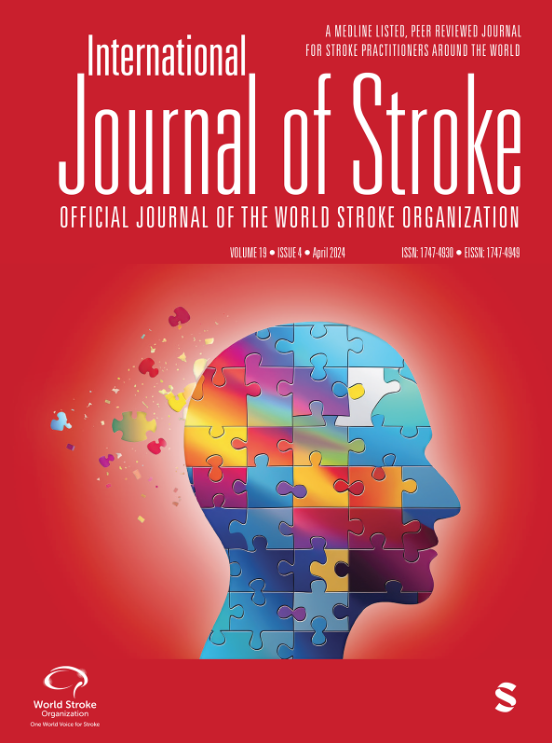Global, regional, and national burden of stroke from 1990 to 2019: a temporal trend analysis based on the Global Burden of Disease Study 2019
IF 6.3
2区 医学
Q1 CLINICAL NEUROLOGY
引用次数: 0
Abstract
Background:Stroke is the second leading cause of death and the leading cause of disability worldwide. However, how the the prevalence of stroke varies across the world is uncertain.Aims:The aim of this study was to and analyze temporal trends of prevalence for Stroke, including Ischemic stroke (IS), Intracerebral hemorrhage (ICH), and Subarachnoid hemorrhage (SAH) at the global, regional, and national levels.Methods:The age-standardized prevalence rates (ASPR) of stroke, IS, ICH, and SAH, along with their corresponding 95% uncertainty intervals (UI), were derived from data in the Global Burden of Diseases, Injuries, and Risk Factors Study (GBD) 2019. This provides estimates for the burden of 369 diseases and injuries globally in 2019, as well as their temporal trends over the past 30 years. Joinpoint regression analysis was used to analyze the 1990–2019 temporal trends by calculating the annual percentage change (APC) and average APC (AAPC), as well as their 95% confidence interval (CI).Results:In 2019, the global ASPR of stroke was 1240.263 per 100,000 population (95% UI: 1139.711 to 1352.987), with ASPRs generally lower in Europe compared to other regions. Over the period from 1990 to 2019, a significant global decrease in ASPR was observed for stroke (AAPC -0.200, 95% CI: -0.215 to -0.183), IS (AAPC -0.059%, 95% CI: -0.077 to -0.043), SAH (AAPC -0.476, 95% CI: -0.483 to -0.469), and ICH (AAPC -0.626, 95% CI: -0.642 to -0.611). The trends of ASPR of stroke, IS, SAH and ICH varied significantly across 204 countries and territories.Conclusions:Our findings highlight significant global disparities in stroke prevalence, emphasizing the need for ongoing monitoring and intensified efforts in developing regions to reduce the global burden of stroke.1990 年至 2019 年全球、地区和国家中风负担:基于 2019 年全球疾病负担研究的时间趋势分析
背景:中风是全球第二大死因和第一大致残原因。目的:本研究旨在分析全球、地区和国家层面脑卒中(包括缺血性脑卒中(IS)、脑出血(ICH)和蛛网膜下腔出血(SAH))患病率的时间趋势。方法:中风、IS、ICH 和 SAH 的年龄标准化患病率(ASPR)及其相应的 95% 不确定性区间(UI)来自《2019 年全球疾病负担、伤害和风险因素研究》(GBD)中的数据。该研究提供了 2019 年全球 369 种疾病和伤害的负担估计值及其在过去 30 年中的时间趋势。通过计算年度百分比变化(APC)和平均APC(AAPC)及其95%置信区间(CI),采用连接点回归分析法对1990-2019年的时间趋势进行了分析。结果:2019年,全球中风的ASPR为每10万人1240.263(95% UI:1139.711至1352.987),与其他地区相比,欧洲的ASPR普遍较低。1990 年至 2019 年期间,全球卒中 (AAPC -0.200,95% CI:-0.215 至 -0.183)、IS (AAPC -0.059%,95% CI:-0.077 至 -0.043)、SAH (AAPC -0.476,95% CI:-0.483 至 -0.469)和 ICH (AAPC -0.626,95% CI:-0.642 至 -0.611)的 ASPR 显著下降。在 204 个国家和地区中,卒中、IS、SAH 和 ICH 的 ASPR 变化趋势差异很大。结论:我们的研究结果突显了全球卒中发病率的显著差异,强调了在发展中地区持续监测和加强努力以减轻全球卒中负担的必要性。
本文章由计算机程序翻译,如有差异,请以英文原文为准。
求助全文
约1分钟内获得全文
求助全文
来源期刊

International Journal of Stroke
医学-外周血管病
CiteScore
13.90
自引率
6.00%
发文量
132
审稿时长
6-12 weeks
期刊介绍:
The International Journal of Stroke is a welcome addition to the international stroke journal landscape in that it concentrates on the clinical aspects of stroke with basic science contributions in areas of clinical interest. Reviews of current topics are broadly based to encompass not only recent advances of global interest but also those which may be more important in certain regions and the journal regularly features items of news interest from all parts of the world. To facilitate the international nature of the journal, our Associate Editors from Europe, Asia, North America and South America coordinate segments of the journal.
 求助内容:
求助内容: 应助结果提醒方式:
应助结果提醒方式:


